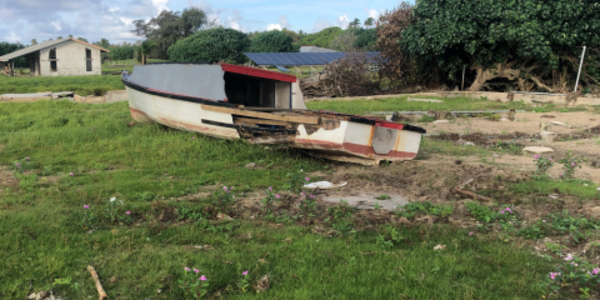
Like black holes in space, areas exist in the ocean with characteristics that are much different from their surroundings. Instead of gobbling up matter and light, however, hypoxic (or low oxygen) zones rob the ocean of oxygen. These zones have such low concentrations of oxygen that marine life must either leave or die. Dead zones, as they’ve come to be known, remain “dead” until their oxygen supply recovers enough to support life again.
Since 2001, NOAA’s Gulf of Mexico Hypoxia Watch program (Hypoxia Watch) has been monitoring the Gulf every year between the months of June and July. NOAA develops near real-time, web-based contour maps of dissolved oxygen concentrations and related data in regions of the Gulf that experience frequent dead zones. The maps and data from Hypoxia Watch provide a baseline of the annual Gulf Dead Zone areal extent, which is later officially measured by a NOAA-supported monitoring survey in August.
The information collected by Hypoxia Watch provides crucial insight to many sectors, including the multi-billion-dollar Gulf fishing industry. This scientific knowledge gives policymakers, commercial fishing interests, tourism offices, the general public, and others an understanding of Gulf conditions that can improve both the economy and recreational pursuits.
What Causes Hypoxia?
Hypoxic waters form in the bottom waters as excess nutrient loading from the river promotes algal overgrowth that leads to eutrophication at the surface. When the algae die and decompose, oxygen is consumed, resulting in low levels of oxygen in the waters.
Hypoxic zones can occur naturally, but scientists have found that they can also be caused or worsened by human activity. Nutrient pollution is the primary cause of hypoxia and is a result of human activities such as urban development and agriculture. Excess nutrients that run off land or are piped into rivers and coasts as wastewater can stimulate an overgrowth of algae, which then sink and decompose. This decomposition process consumes oxygen and depletes the supply available to other marine life.
Dead zones occur all over the world. The largest dead zone covers the entire bottom of the Baltic Sea, which is about the same size as California. Besides the Gulf, U.S. dead zones occur in the Chesapeake Bay and off the coast of Oregon.
The Gulf Dead Zone is the largest in the United States and the second largest in the world. The largest Gulf Dead Zone occurred in 2017, encompassing 8,776 square miles. The smallest measured 15 square miles in 1988. As of 2020, the five-year average size of the dead zone has been approximately 5,400 square miles.
The Annual Hypoxia Survey
The Gulf Dead Zone forms each summer off the coast of Louisiana and Texas, threatening the ecosystem that supports valuable commercial and recreational Gulf fisheries. The Mississippi River is the catchment basin for 41% of the contiguous United States and ultimately drains into the Gulf. The river carries nutrient pollution from agriculture, industry, and cities. Summer’s warmer temperatures and calm seas prevent freshwater from the Mississippi from mixing with Gulf water and circulating oxygen throughout the water column. The seasonal prevention of mixing keeps oxygen-rich waters from resupplying the bottom waters, resulting in the formation of the hypoxic zone.
The Gulf of Mexico Hypoxia Watch evolved as a cooperative project of NCEI, NOAA Fisheries, and the NOAA CoastWatch–Caribbean/Gulf of Mexico–Regional Node. Each year from early June through mid-July, as part of the combined state/federal/university Southeast Area Monitoring and Assessment Program, scientists aboard the NOAA Research Vessel Oregon II measure dissolved oxygen and other water quality variables using CTDs (instruments that gauge conductivity [salinity], temperature, and depth) on the continental shelf from Texas to northwest Florida. Every one to three days, the ship transmits the data to NCEI scientists at Stennis Space Center in Mississippi. NCEI uses the data collected during the survey to create near-real-time bottom dissolved oxygen contour maps and environmental profiles that are publicly available online, usually on the same business day that the data are received by NCEI.
How Hypoxia Watch Helps
The environmental data gathered during the annual cruises help scientists understand the effects of the physical environment on fish and other marine organisms. Hypoxia Watch offers the first look at the season’s hypoxia conditions and provides critical information for management of the Gulf Dead Zone. Users access the data primarily in two ways—either directly from the Hypoxia Watch website through contour maps and the underlying dissolved oxygen data, or through forecast and management models that incorporate dissolved oxygen data from Hypoxia Watch.
While knowledge gaps still exist about the impact of the hypoxic zone on individual species, habitat loss, migration shifts, and reproductive disruption have already been observed. These impacts not only alter commercial and recreational fishing patterns but can also reduce the economic vitality of these fishing industries. NOAA and its partners are leading efforts to understand, predict, and ultimately reduce hypoxic events and their effects on ecosystems and coastal communities.



